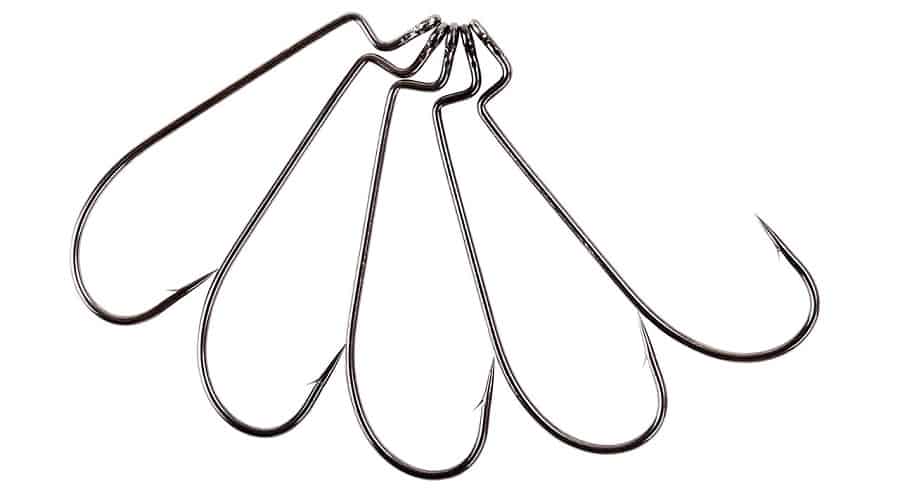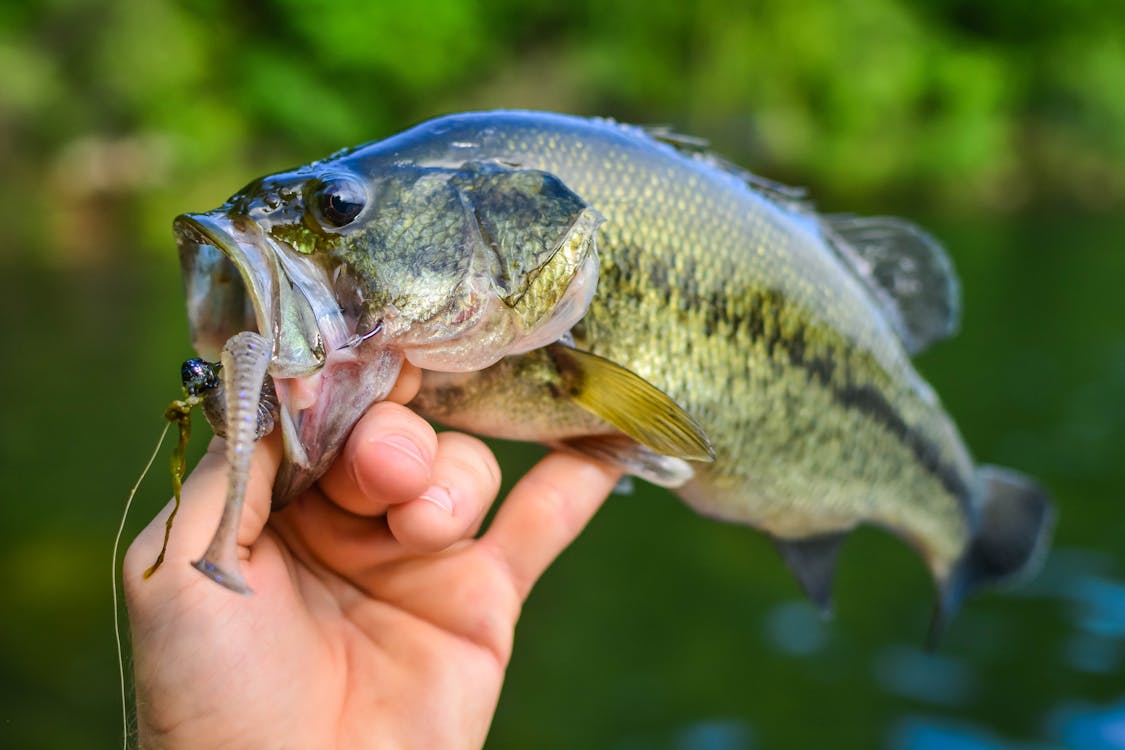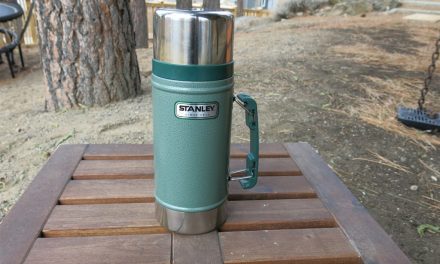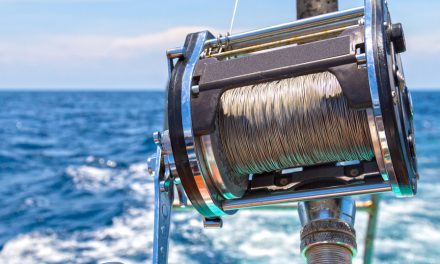There are some things in this life that just don’t appear very functional, but turn out to be extremely useful in actual practice. The wacky worm rig is one of those items. Put together and cast into the lake, the wacky worm rig doesn’t appear to be a very well-thought-out set-up, but the bass might disagree. There’s something about wacky worms stuck on hooks that drive bass and most other predatory fish in a frenzy. Use a wacky worm rig with the right color worm, and you can hardly miss. Here’s a breakdown on how to assemble a wacky rig for yourself.
How the Wacky Worm Rig Works
The most obvious feature of the wacky worm rig is that the hook is placed in the middle of the worm, rather than the end of the worm. Placing the hook in the middle of the worm body causes the rig to more or less flop around while it’s in the water. If you handle a wacky worm rig just right, you can closely mimic the action of a swimming worm or leech. This, of course, drives bass or other predatory fish nuts and entices them to strike at the bait.
The trick in utilizing the wacky worm rig is to develop a sort of stop-and-go action, reeling the wacky worm rig in. Give the reel a few turns, pause, and repeat the whole way with the rig. Once you get the correct rhythm down, you’ll spend a lot more time reeling in the bass than reeling in the rig.
Materials Required to Build a Wacky Worm Rig
- A soft plastic worm
- A fishhook (octopus hooks are recommended)
- A hook guard (this is optional)
- An O-ring that fits snugly around the worm (for the O-ring set up)
There are a few different ways to set up a wacky worm rig. Luckily, they’re all pretty simplistic, and they all serve different purposes.
The Weedless Wacky Worm Rig

Image credits: scottgardner via Pixabay
Step One: Inserting the Hook
Place the hook tip lengthwise into the body of the worm. It should be inserted at the worm’s middle.
Step Two: Hook Placement
Push the hook all the way through the worm’s body. Be careful not to accidentally poke yourself. On this note; it’s best to keep the hook centered, or else some worms may thin or crack under pressure.
Step Three: Snag-Free Set up
Insert the hook tip back into the worm body and leave the tip concealed. To expand upon this point, the hook should dip below the body of the worm, with the hook tip tucked just inside the worm. This way, when running through reeds or lily pads, you don’t hook onto something that you shouldn’t.
The O-ring Wacky Worm Rig

Image credits: Dmitriy via Pixabay
Step One: The O-ring
Roll the O-ring down to the middle of the worm’s body.
Step Two: The Hook
Slip the hook tip under the O-ring and let the worm hang from the hook at its center. This one works best with a hook that features a hook guard.
The Classic Hook Guard Wacky Worm Rig
Step One: Insert the Hook
Place the hook through the worm body laterally.
Step Two: Make it Snag Free
Engage the hook guard to make the rig snag-free.
Things to Keep in Mind with the Rig

Image credits: Michal Dziekonski via Pexels
If you opt to make use of an O-ring rig, you may be best served by purchasing an automotive O-ring of the correct diameter instead of a fishing store O-ring. The ones built for automotive use are just tougher and less likely to give. Speaking of that, the wacky worm rig really only works well for fish species that feature a big enough mouth to swallow the whole rig, hook included. If you’re going after fish that are only big enough to get a piece of the worm, you may end up with nothing but a torn-up bait or a missing worm. Fish, like largemouth bass, are the best target when it comes to wacky worm rigs. Although, reducing the size of the worm and the hook accordingly can make the rig effective for species with smaller mouths.
A few Final Thoughts
No particular fishing rig will ever be all things to all anglers, and the wacky worm rig is no different. Similarly to all rigs, you will have to engage in some trial and error to determine what works and what doesn’t in any given lake. Selecting the correct color for the worm in the wacky worm rig is just as important, if not more important, than what type of rig you decide to go with. Proper hook size selection in relation to the fish you’re going after is also key. If you give something like the wacky worm rig enough time and effort, you will likely get good performance from it, but it might not happen in one outing. Try, try again, is the motto of any successful angler to keep in mind.






 E-Newsletter
E-Newsletter